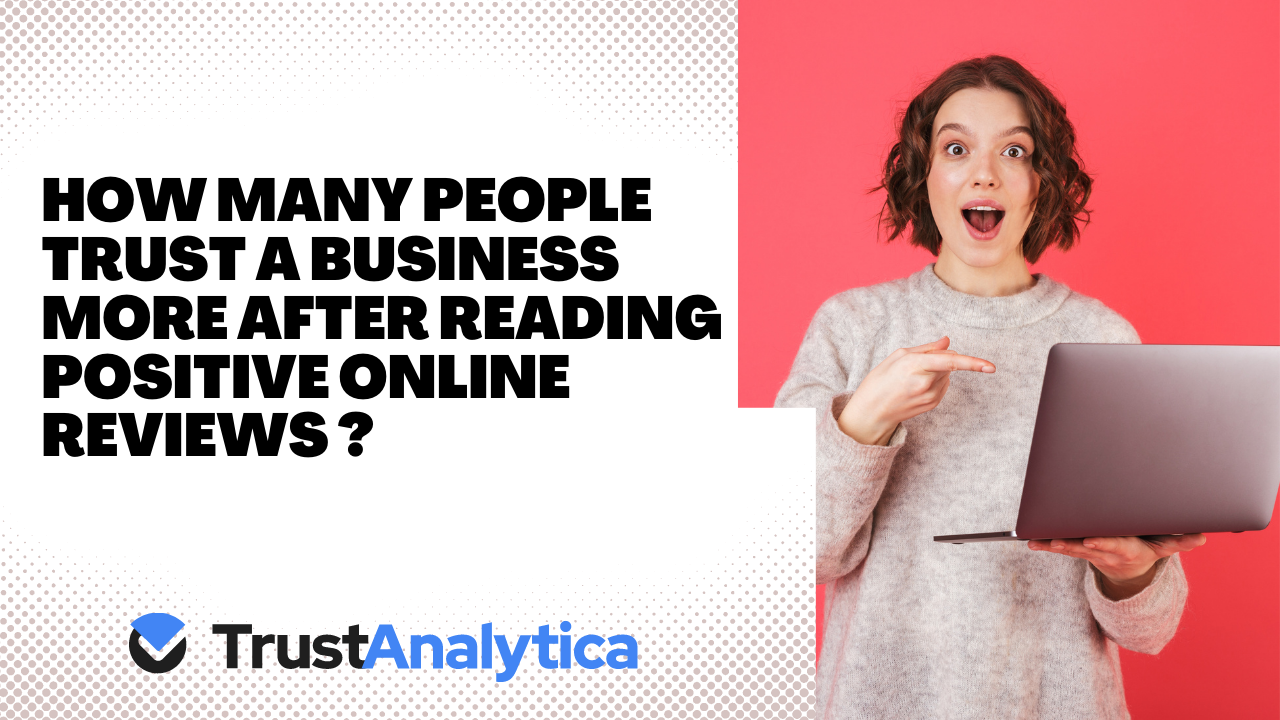Updated: 22nd November, 2023 Businesses were moving to the World Wide Web long before the pandemic. But the arrival of COVID-19 proved to be the last straw in the move toward the virtual world. Now, businesses, whether they are providing online products or services or not, have a solid online presence across multiple platforms. Whenever […]

Updated: 22nd November, 2023
Businesses were moving to the World Wide Web long before the pandemic. But the arrival of COVID-19 proved to be the last straw in the move toward the virtual world. Now, businesses, whether they are providing online products or services or not, have a solid online presence across multiple platforms.
Whenever a business creates its website and social media profiles, it becomes a player in the tug of war-between different stakeholders. Where the brand wants to appear good and reliable, the often anonymous forces on the internet think otherwise.
Online reputation is the perception and quality of thoughts of people when they think of your business.
Online reputation is replenished and grows from positive content, coming from both the brand, users, and third-party sources. The most common sources are feedback channels, including comments, reviews, ratings, polls, and so on.
On the other side, negative content can affect the face of the brand by merely flipping the content. The same feedback, when posted in an incriminating light, results in a poor brand reputation.
There is no definitive guide available that can tell the true comparative value of both positive and negative content. Some estimates, however, can help brands visualize the detrimental effects of negative sentiment surrounding them online.
According to research by digital marketing experts, negative feedback, such as a poor review or a demeaning comment, can detract more than 20 prospects from contacting that business to do a transaction. Similarly, 30 customers reflect on their choice when they see negative comments about their brand.
In another study, researchers found that negative feedback is more potent than its positive counterpart. Some have even designated several positive reviews it takes to neutralize, or at least minimize, the effects of a negative review. It was 27.
This is the power of feedback and reviews, both positive and negative. That’s why online reviews and feedback are at the centre of every brand’s online reputation management strategy.
Before we can remove or suppress negative content, it is necessary to find it and classify it. The online world is vast but there are ways to find content that can paint your brand in a negative light.
When it comes to finding negative content surrounding a brand, there are two ways to do that.
To achieve that, all you need to do is search your brand’s name online through a search engine, preferably Google, and study the top results. No matter if it is a small local brand or a large corporation, you will find results from the official websites, social media profiles, as well as online directories, and listing sites.
By studying the quality and quantity of content posted on these channels, you can determine the health and condition of your brand’s online reputation.
The first plan of action after discovering negative content surrounding your brand is to approach the problem head-on. This could be about contacting the author, requesting search engines to de-index the source, or seeking cover behind the violation of guidelines loophole.
In this section, we will take a detailed look at each of the actions that a brand can take to get the negative content removed from the source.
Contrary to popular belief, the online world is not a wild, wild west as there are rules and guidelines surrounding creating and uploading content. The most common type of rules involves the quality of language and content. The majority of platforms have a zero-tolerance policy for inappropriate language.
It is worth your time to study and analyze the terms and conditions for major platforms because it can help you to flag a piece of content as inappropriate based on any of these. For instance, in the case of Yelp, you can get negative reviews removed by contacting the platform. The same goes for YouTube where incriminating videos can be taken down, especially when they are violating copyright guidelines.
If you cannot get the guidelines and platforms to heed your request, you can contact search engines in this regard. Google has a dedicated page where you can lodge your complaints.
Keep in mind that if Google decides to take action against the web page showing false negative content against your brand, the search engine will only stop showing it in the search results. It has no authority over removing that page from the website.
However, it is rare for search engines to step into issues where community-based feedback is shared with other users, but it is worth a try.
In the case of a blog or an article that is painting your brand in a negative light, it pays to contact the author and ask him to remove the story. If this happens, the page will automatically lose its indexing and ranking status from Google.
There are good chances of this strategy working when you have solid evidence that suggests otherwise to the content of the article. Many online reputation management companies have contacted authors and shown them the evidence.
In turn, they either removed the article altogether or edited it to reflect the new version of the truth. So, when you have your brand’s online reputation at stake, it does not hurt to connect with people and work things out.
We have said in the earlier section that the internet is not a wild, wild west, which is true but it is also not a regime where people can “force” others to reconsider their stance. In many cases, it becomes extremely difficult to pinpoint the source of false information resulting in more people and platforms involved.
So, what is the next move for a brand?
This is where technical or implicit ways come into play. When you cannot get content removed directly from the source, suppressing it through proactive measures may bring the desired fruit.
Let’s take a look at some of the measures in this section.
Before moving forward with the proactive strategy, it is necessary to locate the origin and triggers behind negative content appearing on the web. The first thing to do is to carry out a keyword analysis against the results, from every possible angle, whether it is products, services, careers, etc.
In case some marketed keywords and phrases are showing negative results, it is best to employ a tool or a reputation management team to help you get out of the crisis.
Sentiment analysis is a practice where brands determine the intent behind the content. There are three major types of sentiments surrounding a brand.
The extreme poles are self-explanatory, and the third one is where someone unrelated to your brand, such as a person or any other organization receives feedback.
This practice allows for the development of a strategy based on what is working and what needs to be working. The positive items should be promoted and the negative ones should be attempted to get de-indexed.
Optimizing Owned & Neutral Content
When your brand has plenty of content lying around, it is best to repurpose it and get it to work. The primary focus should be on the positive content that is ranking below the negative content because it needs a boost.
In the next step, content in the neutral category should be optimized and fine-tuned to back the positive one. Again, keyword incorporation and technical tweaking is the best option.
Tapping Into The Potential of Social Media
Social media is the mainstay of billions of people each month. You do not have to deal with all the platforms, just a handful of major players suffice in this regard.
There are many other benefits to creating and optimizing profiles for social media;
The best platforms in this regard are Facebook, LinkedIn, Instagram, Twitter, TikTok, etc.
Contributing To Third-Party Sites
Posting content on third-party sites with high authority can help improve your brand’s image and suppress the negative content surrounding it.
The best way to approach this strategy is to find platforms that align with your business’s niche. For instance, if you are an online retail store, you can get platforms like Medium and other blog sites that help consumers choose the right brand.
In the end, you need to disturb the status quo that is not in your brand’s favour.
How does negative content affect brand reputation?
Prospects and customers want their associated brands to have spick and span reputation. When this is not the case, businesses lose valuable revenue from new and current clients. Since perception and word of mouth are the new online currency, brands need to cope with the “bad” press and take steps to revive their name.
What is the role of negative social media content in a brand’s reputation?
Social media plays a big role in making or breaking the brands’ online reputation. One of the main reasons behind this is the sheer number of users and things going “viral” where a piece of content reaches millions in a matter of days. Brands painted in a negative light on social media incur huge losses in terms of market standing and revenue.
How can I avoid personal reputation risks?
Here are some steps that can help you prevent reputational disasters:
What are the best ways to deal with a negative brand image?
There is no one-size-fits-all strategy when it comes to handling negative brand image. Still, the first step for brands is to own up to the mistake, if any, and promise to resolve the issue as soon as possible. It is also worth the trouble to develop a strategy to deal with the crisis.
How can you deal with negative press coverage?
Negative press coverage can deeply hurt a brand, from its online face to sales and revenue. The first step in dealing with bad press is to clarify the situation. Then, brands should mobilize resources from PR and digital marketing to start damage control.
This is where having a professional reputation management company, such as TrustAnalytica, in your corner can avert reputational disasters.
How professional reputation management companies can help brands?
Professional reputation management companies help brands with their online images through these tactics:
Online reputation management for brands is now a matter of life and death. Without a combination of proactive and reactive strategies to back their online standing, businesses can’t survive, let alone thrive and grow.
In this blog, we have shared some insights regarding how to find and counter negative content targeted toward a brand. Keep in mind that most of the time, the first approach does not work, especially when you do not have empirical evidence to support your claims.
Ultimately, having a seasoned reputation management company can do this daily, meaning you can avoid all the negative content and PR disasters in the first place.
 How to improve online reputation for Health clinic: Guide
How to improve online reputation for Health clinic: Guide  How Many People Trust A Business More After Reading Positive Online Reviews ?
How Many People Trust A Business More After Reading Positive Online Reviews ? 
